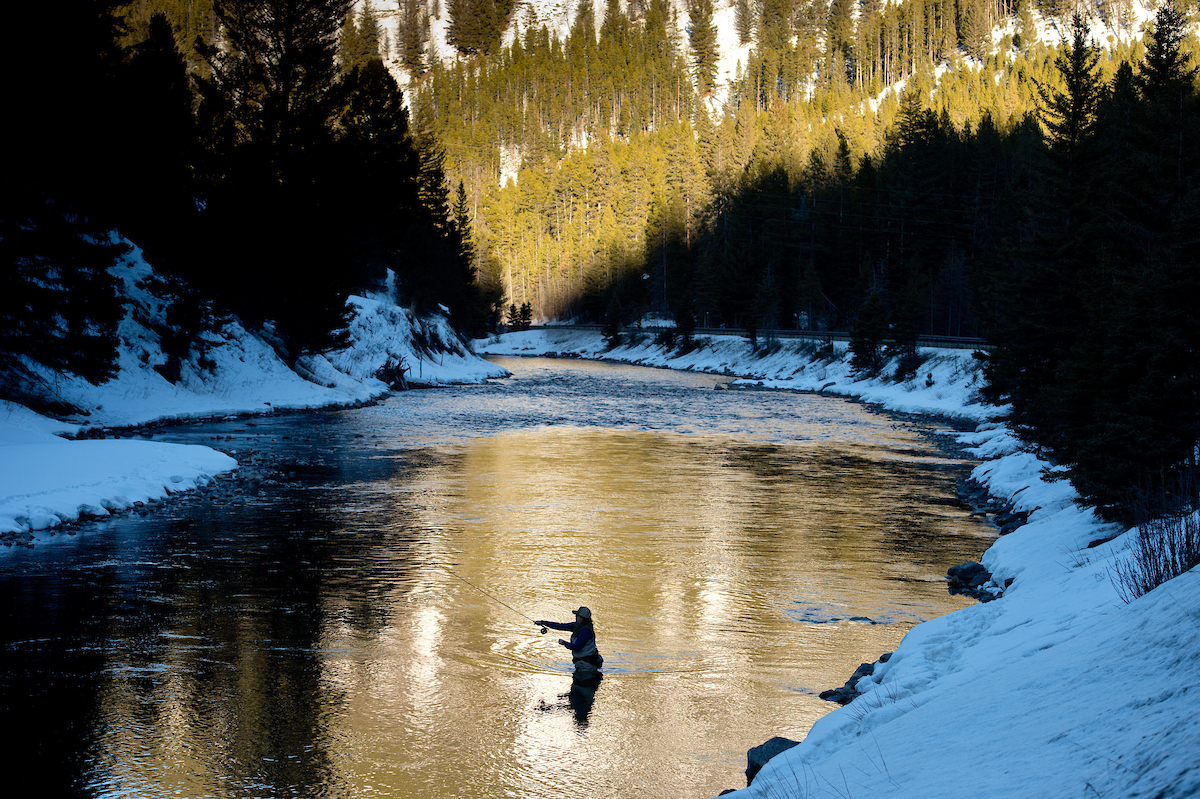Photo by Rich Addicks Photography
By KRISTIN GARDNER and KAREN FILIPOVICH
This fall has turned out snowier than average, but it also came with several days of temperature highs over 70 degrees Fahrenheit in Mountain Village. Overall, October had a mean temperature of 34 degrees, 10 degrees cooler than the 44-degree average.
“Weather,” according to earth sciences professor Cathy Whitlock of Montana State University, “is defined as short-term changes in the atmosphere that occur over hours to months.”
Climate, on the other hand, is the long-term average weather. The National Weather Service compares today’s temperatures to the average from 1981 to 2010. Longer-term records are also used for comparison, though in this part of the world, temperature recordings rarely go back beyond about 100 years. Without knowledge of climate, there is no context for whether a day is unseasonable or average.
Climate can also vary due to specific natural events. The best-known event that affects Big Sky is the El Niño and La Niña cycle. This is a cycle of ocean temperature warming and cooling that affects local temperatures and precipitation, typically over the course of a winter season. This winter, the National Oceanic and Atmospheric Administration Climate Center has calculated an 85-percent chance that it will be neutral this year which means no likely impact on local weather.
Whitlock lists other natural changes including short-term solar variability and volcanic eruptions that can also shape our weather.
Climate change refers to changes that have been occurring mostly in the last several decades. In southwest Montana, average annual temperatures have been rising about .35 Fahrenheit each decade since 1950, according to the 2017 Montana Climate Assessment. This adds up to a little more than 2 degree rise in temperature since 1950.
“Montana is warming at a faster rate than we’ve seen in the last 2,000 years and probably the last 11,000 years,” said Whitlock, who is an author on the Montana Climate Assessment. She says that “greenhouse gasses in the atmosphere are higher than any period in the last 800,000 years.”
“Two years of high snowfall don’t yet describe a climate trend, so we have to wait and see if our snowy winters persist,” she said, adding that projections of future climate changes show an increase in winter precipitation, but rising temperatures will mean more of that precipitation will arrive as rain in the future.
Weather continues to move up and down compared to this new, upwardly mobile average temperature.
A cartoon video produced by the University Cooperation for Atmospheric Research visualizes this like hiking up a slope with a dog. The dog will sniff above and below the trail while the hiker proceeds up the slope in a straight line. The dog is like the weather and the hiker is climate, but all the records are telling us the direction for both is up.
Big Sky residents will still have plenty of days in ski jackets in the next 50 years, but snowpack won’t last as long, rendering the snow bank that stores water for summer less effective, leading to more frequent summer droughts.
This article originally appeared in the Nov. 22 – Dec. 5 edition of Explore Big Sky.

